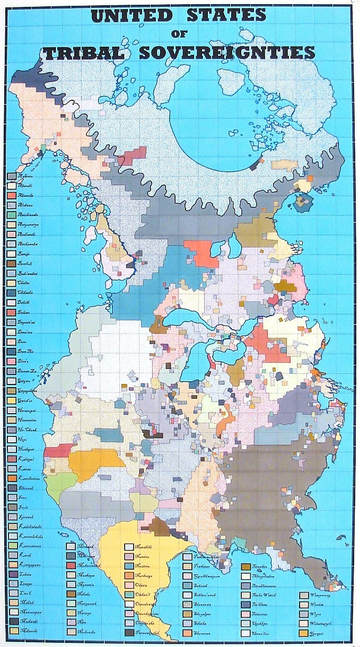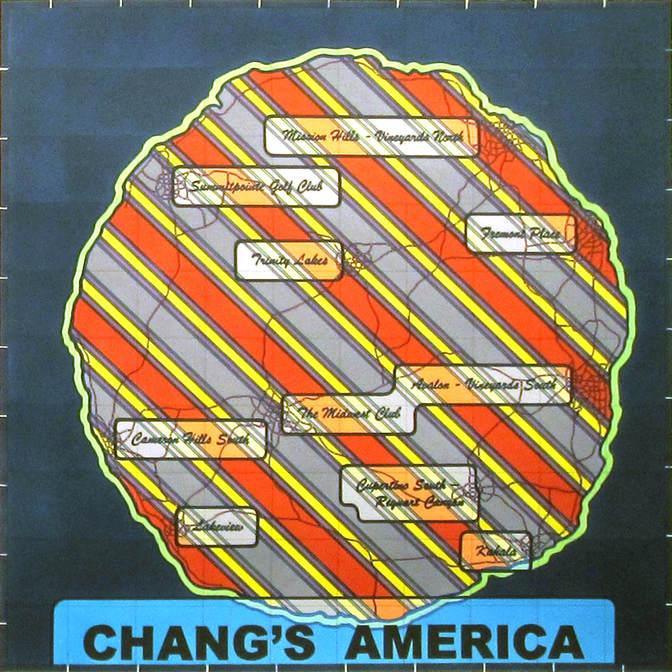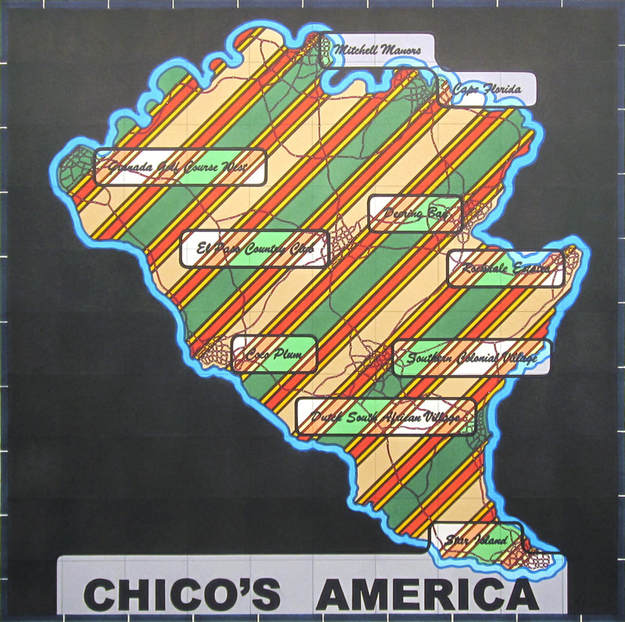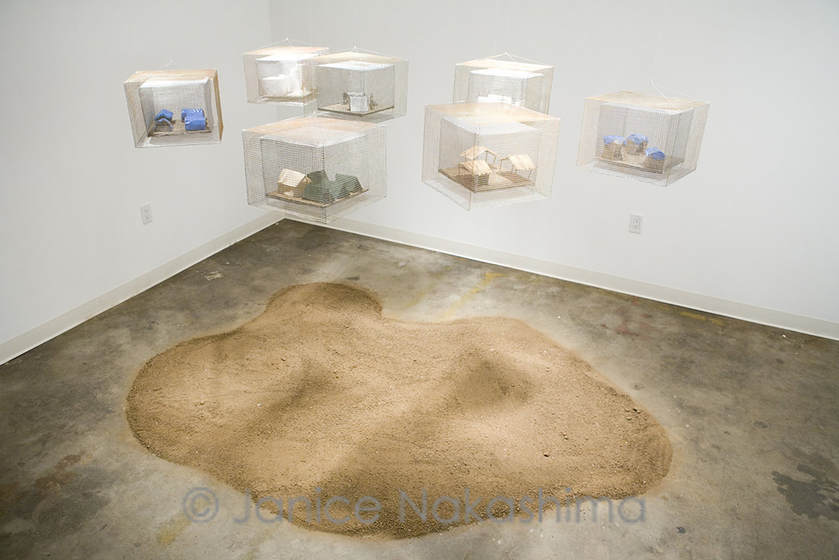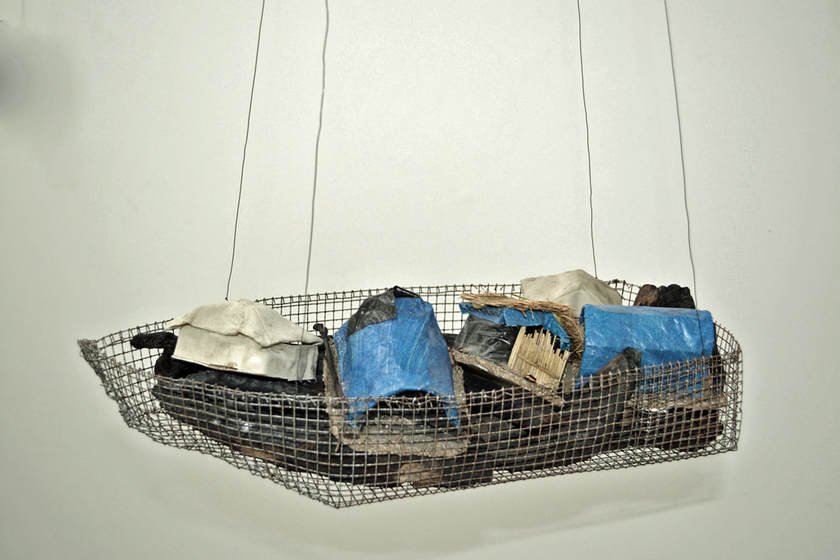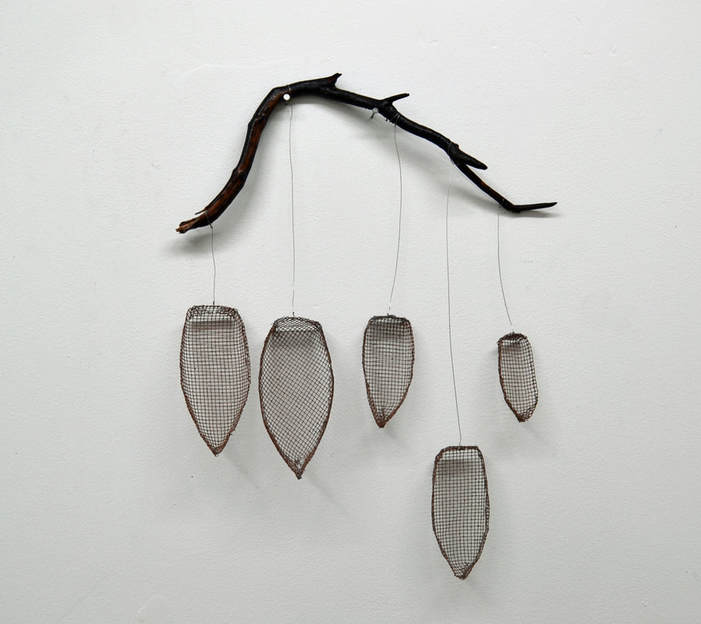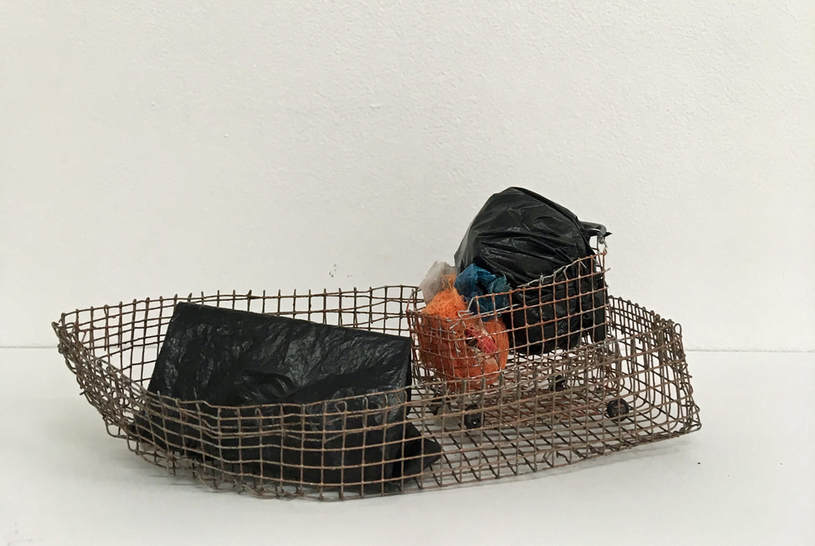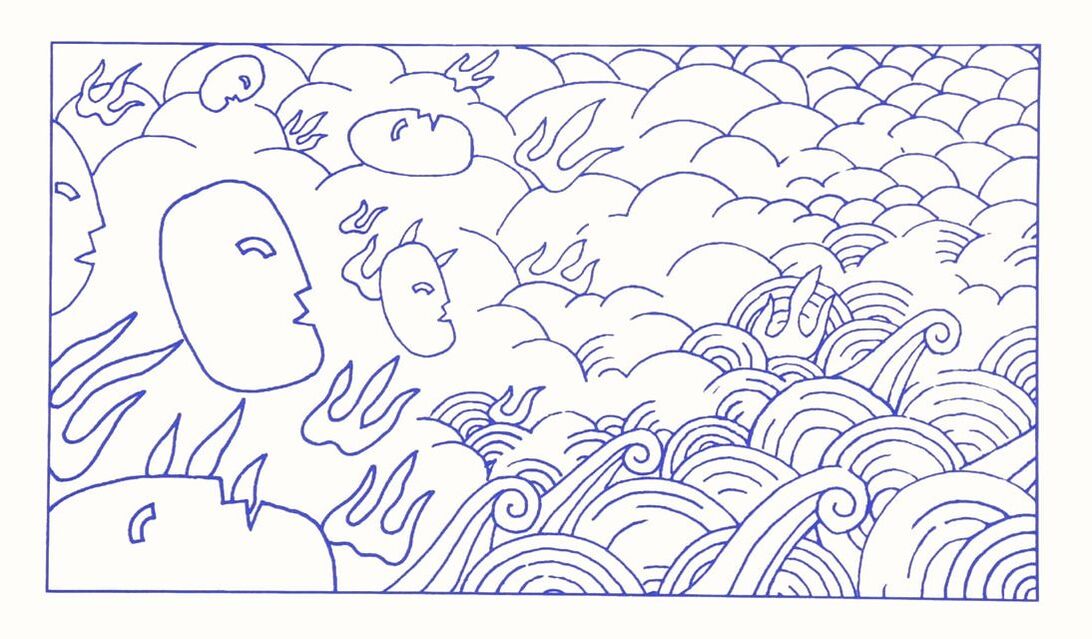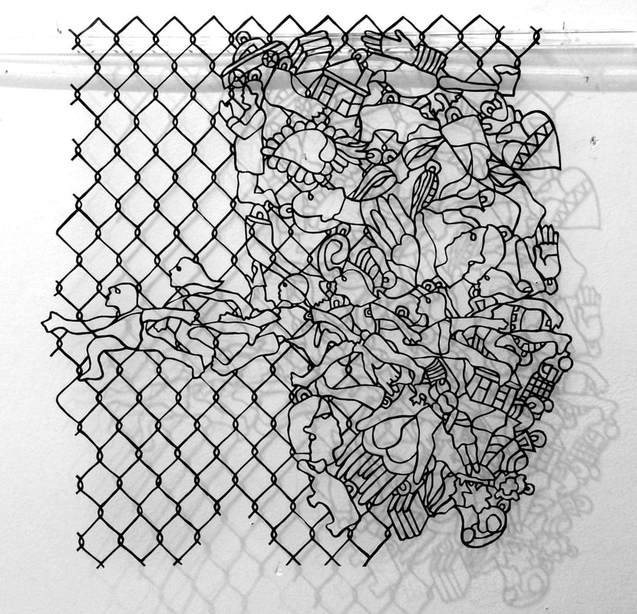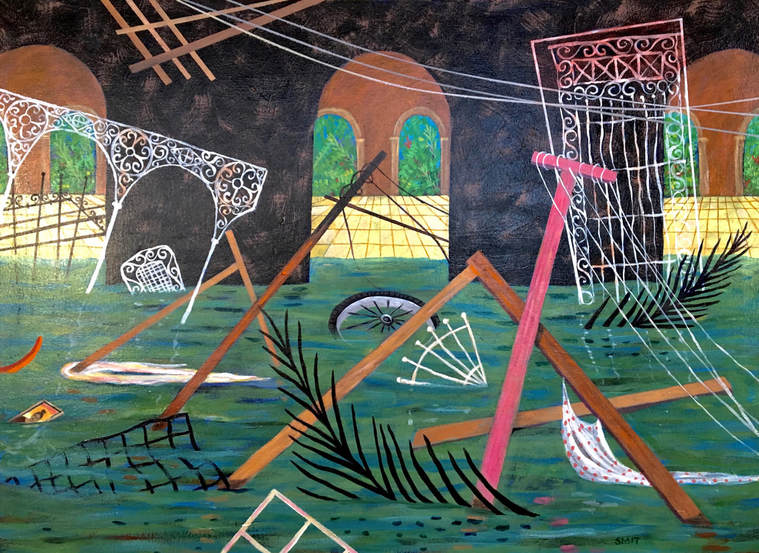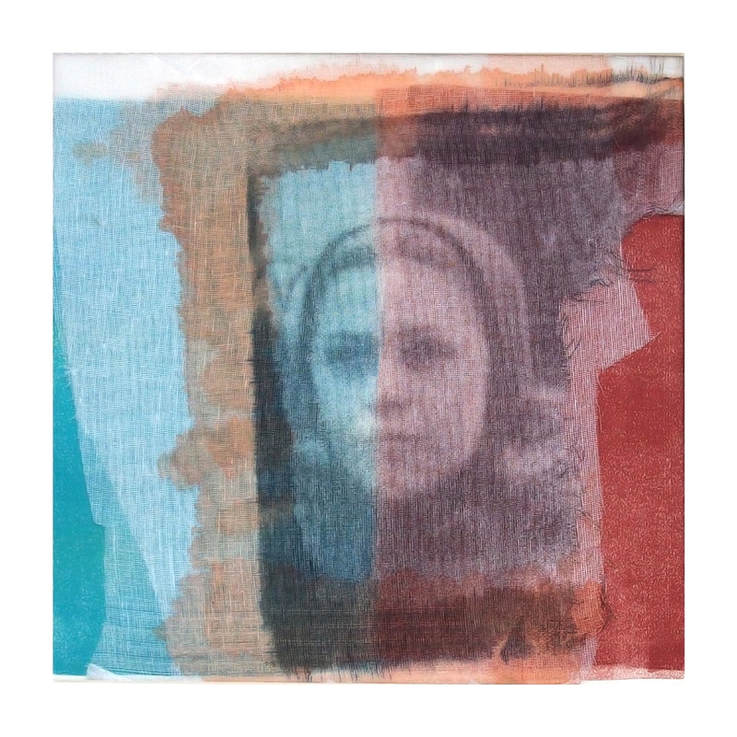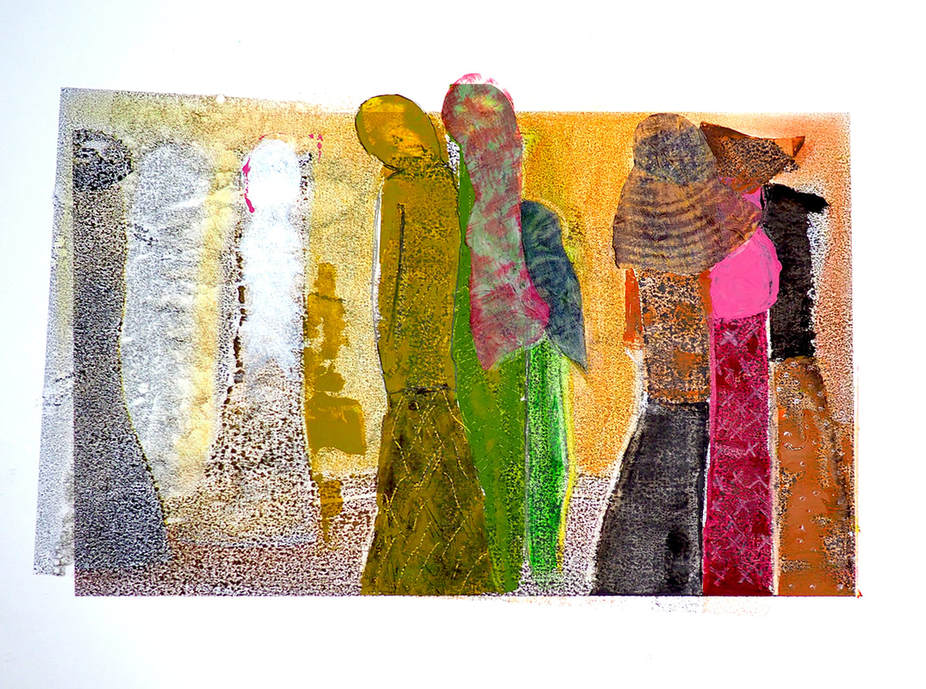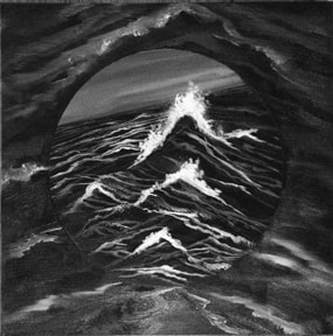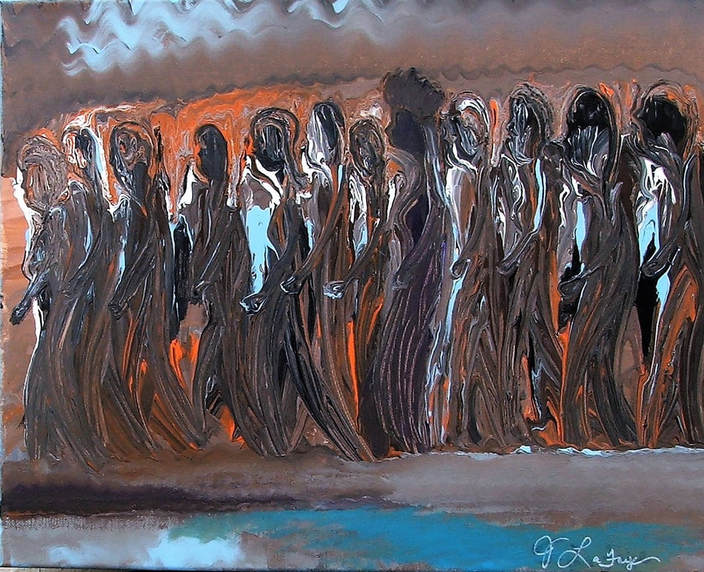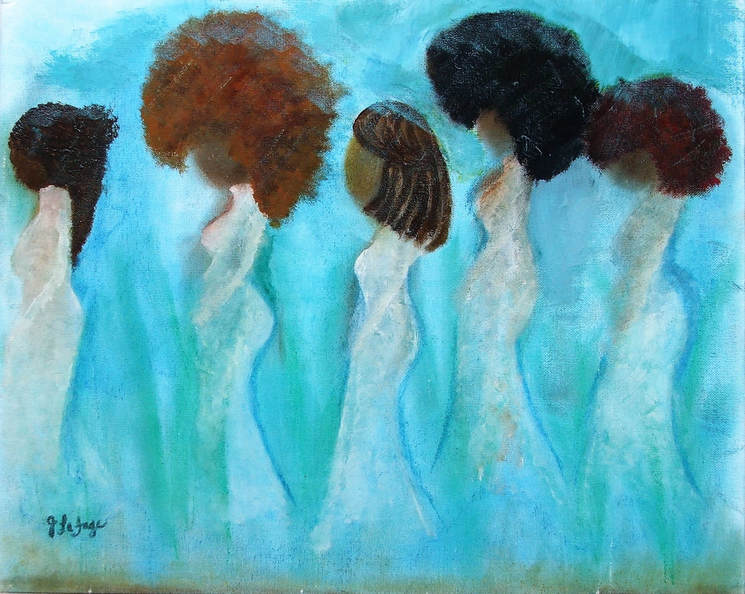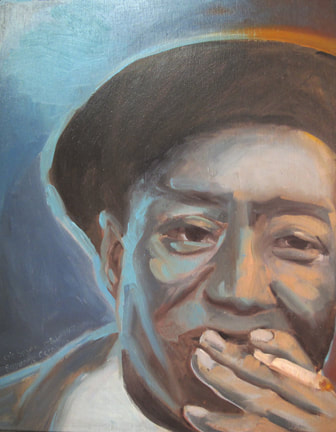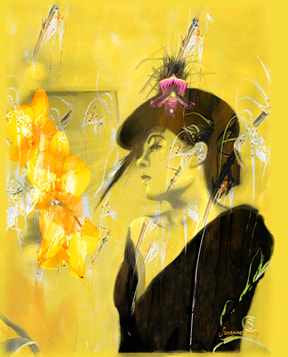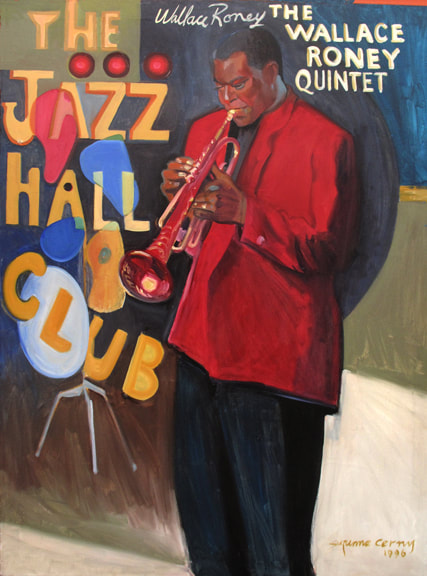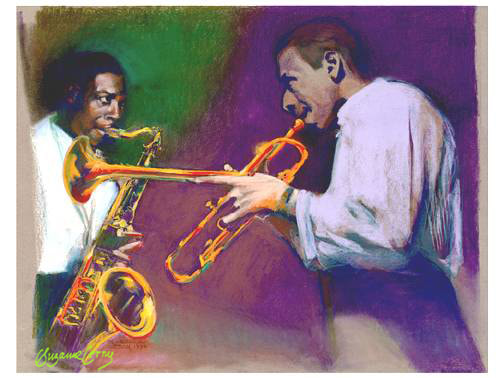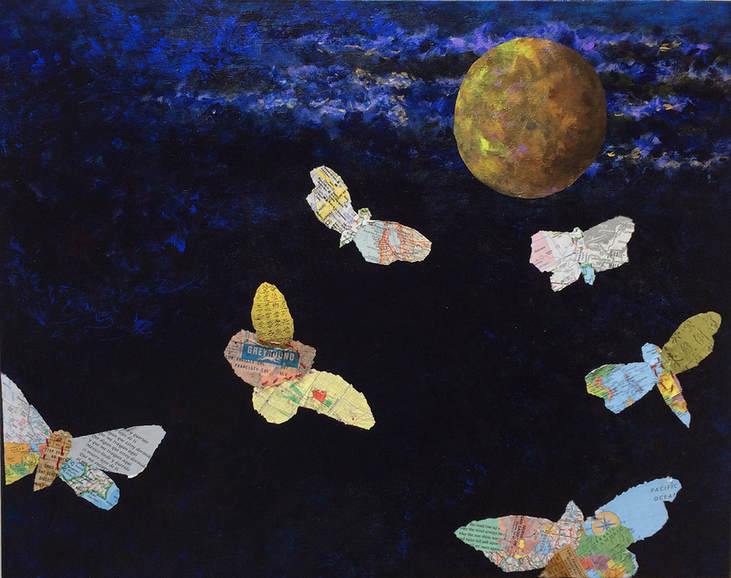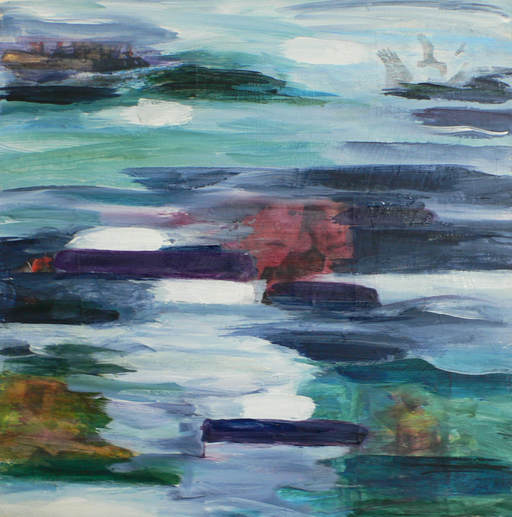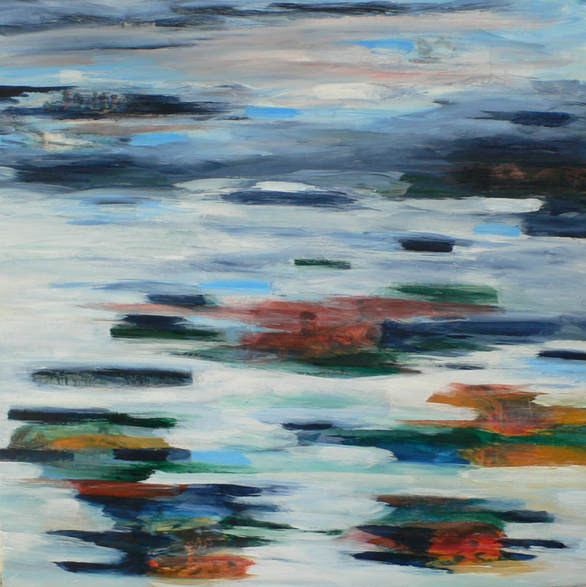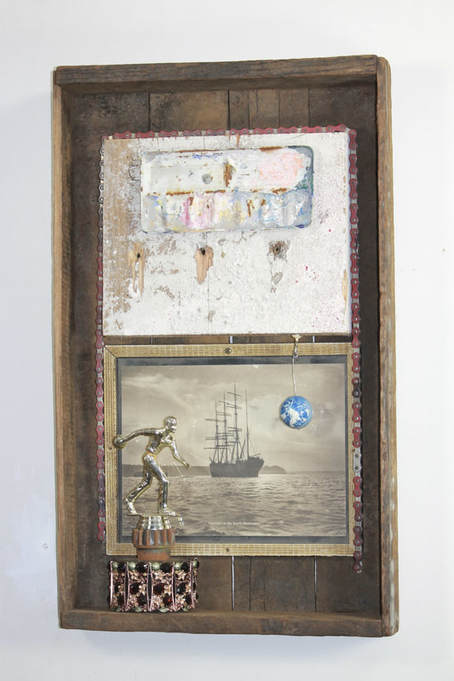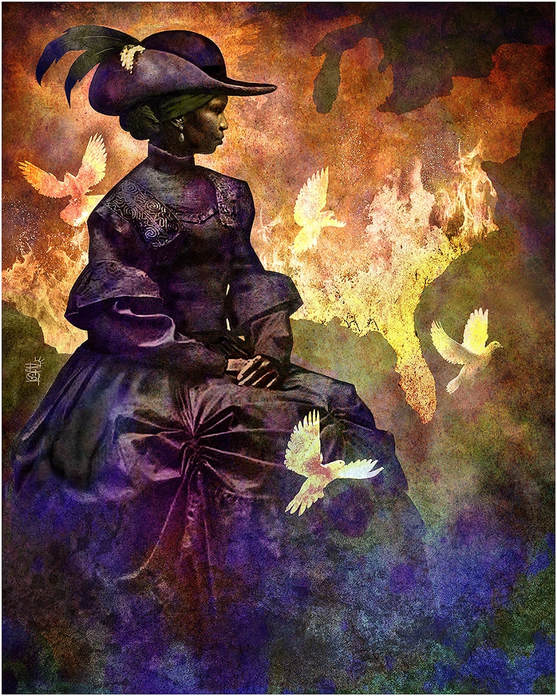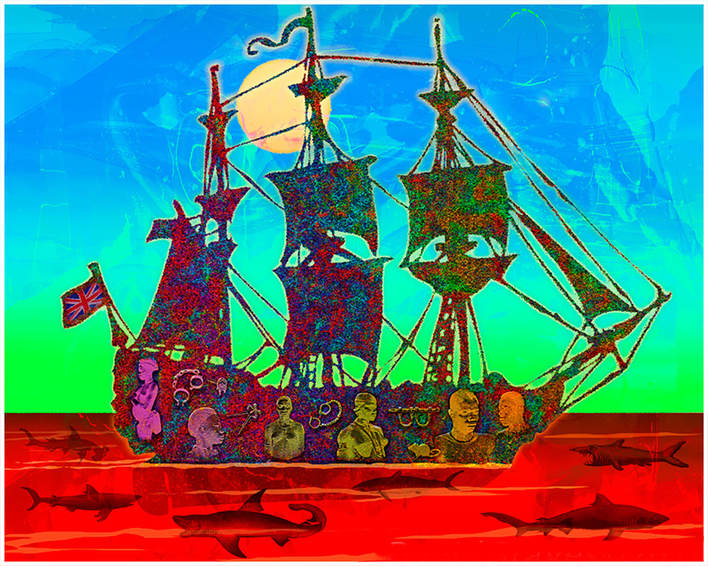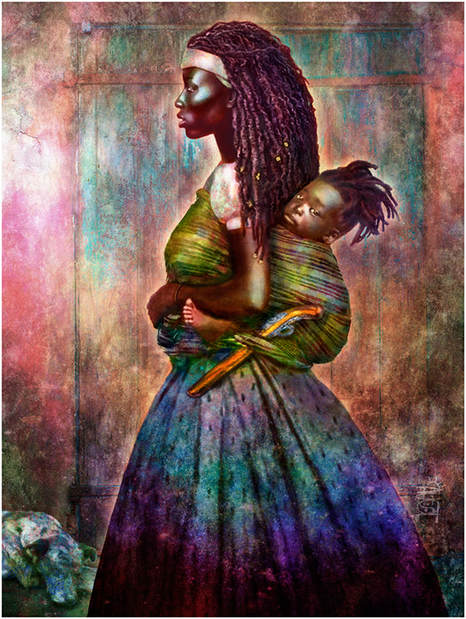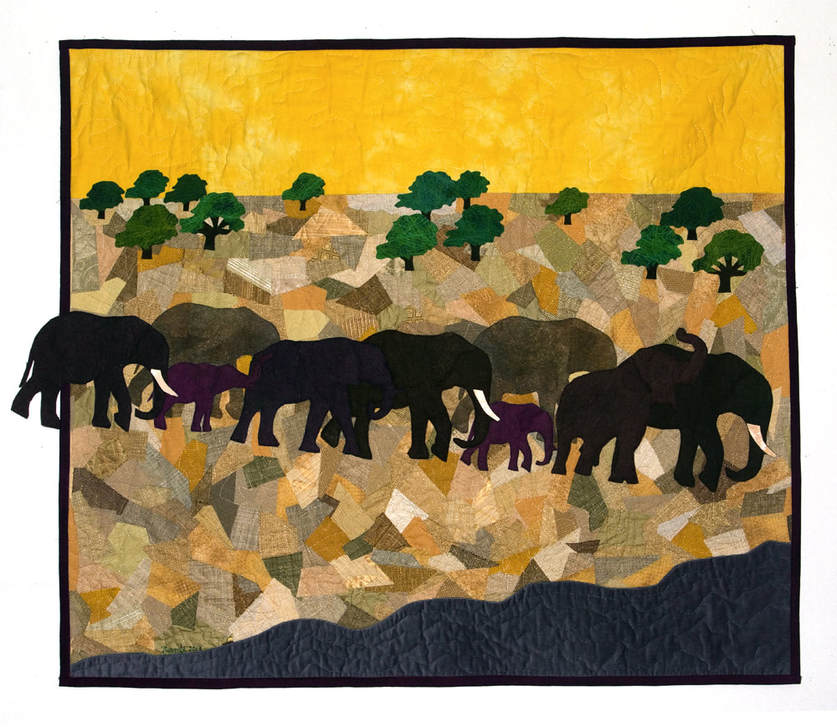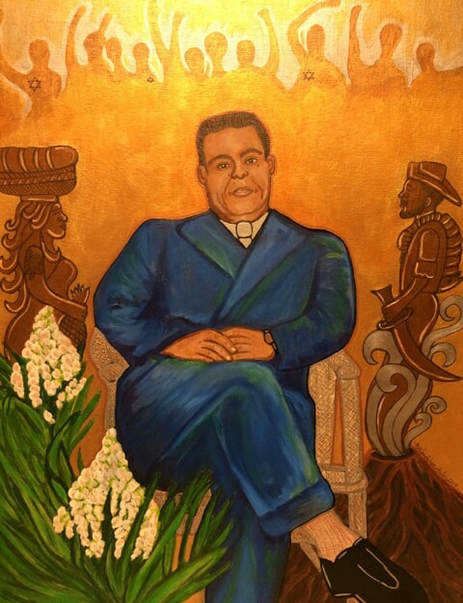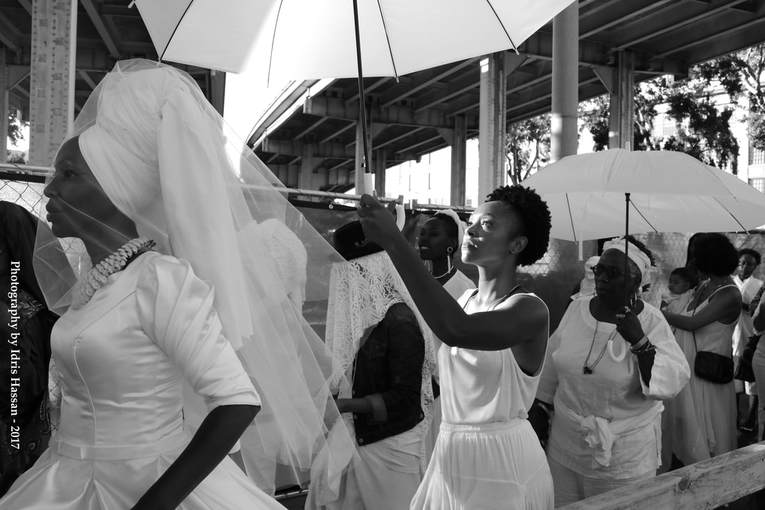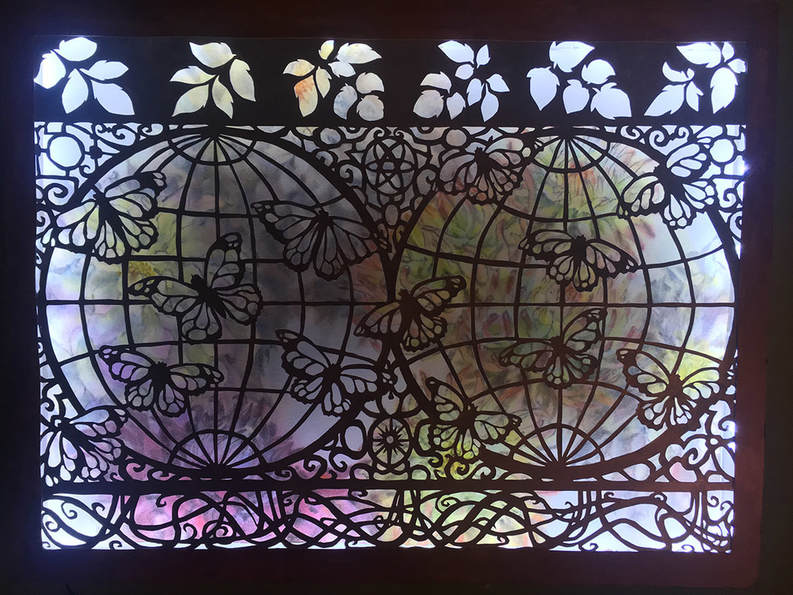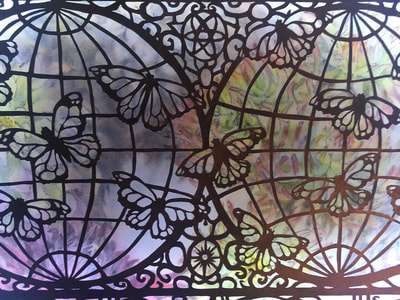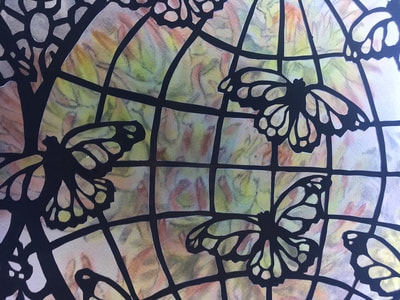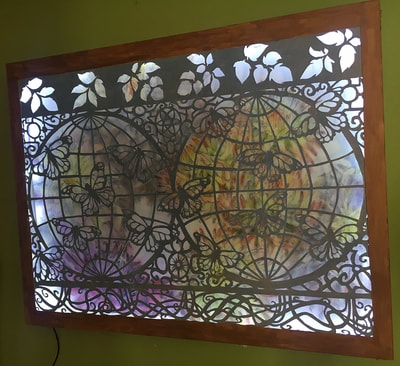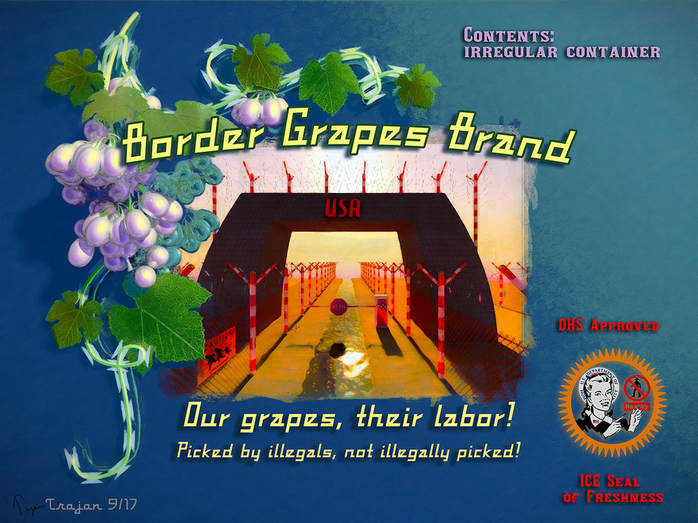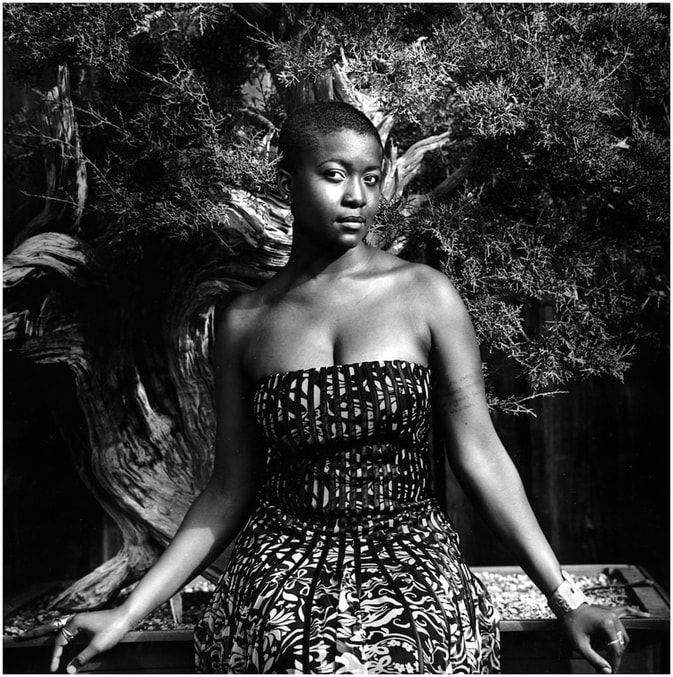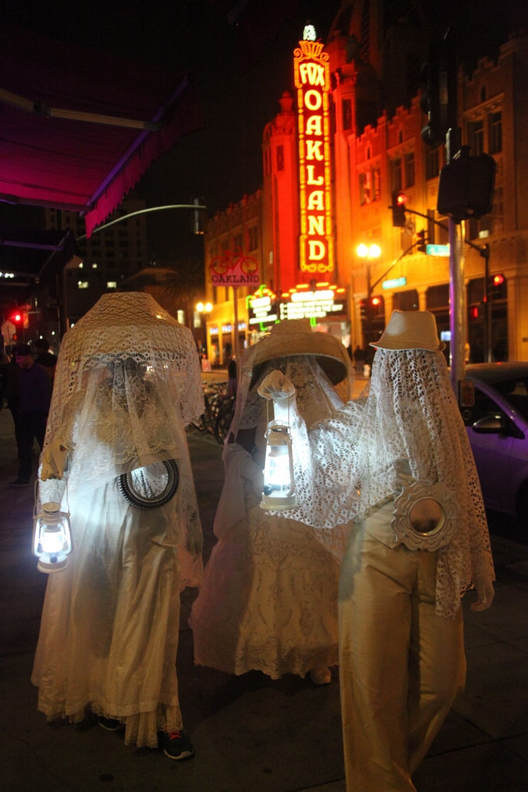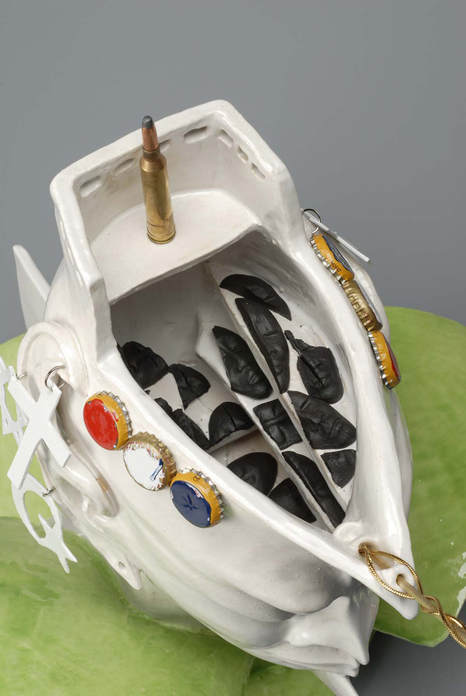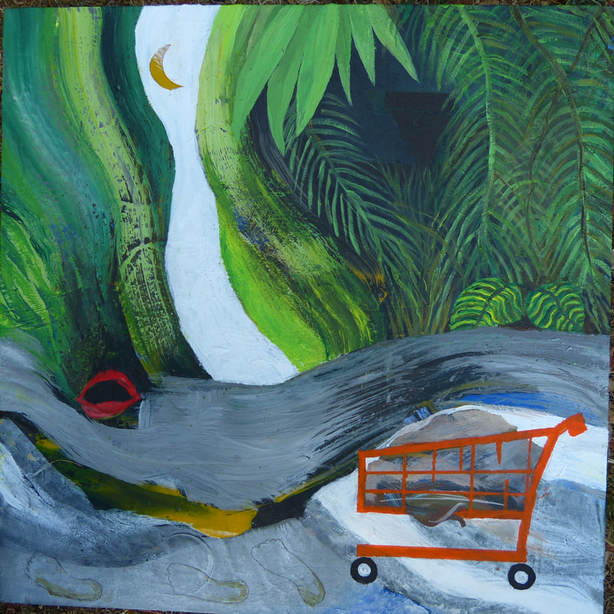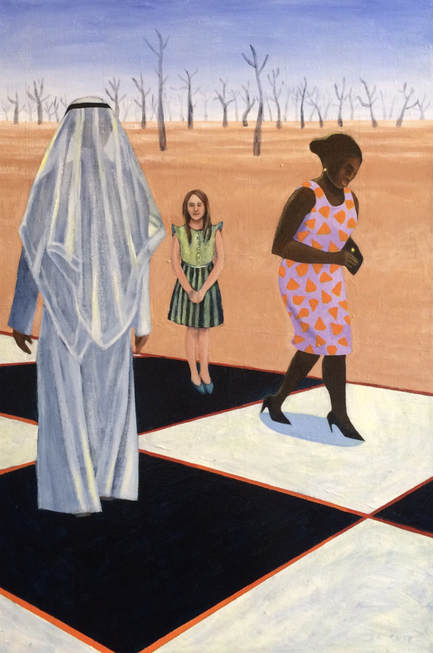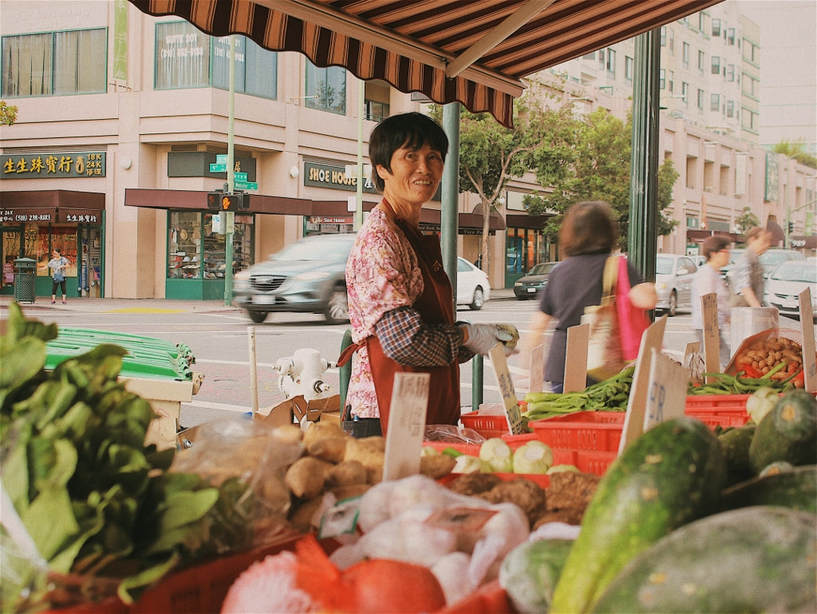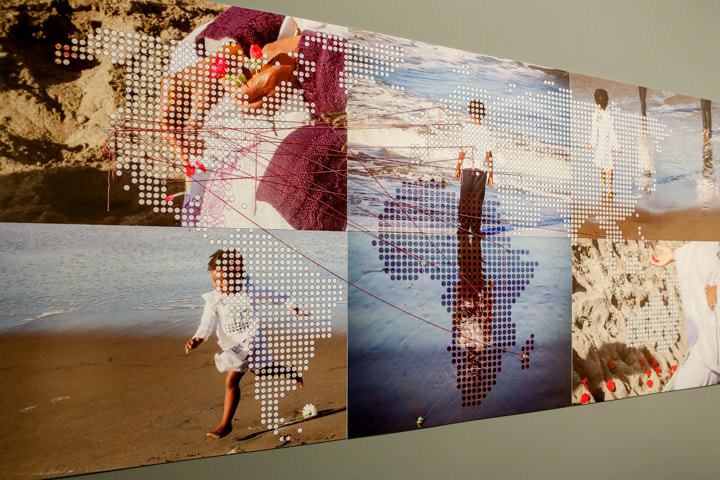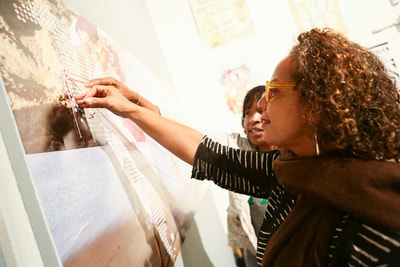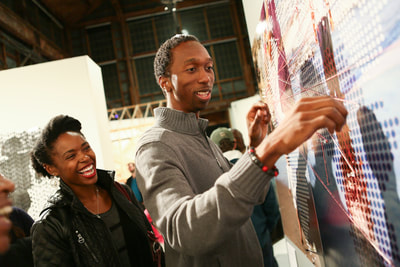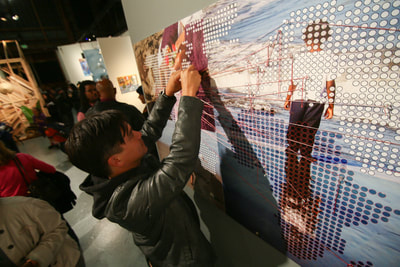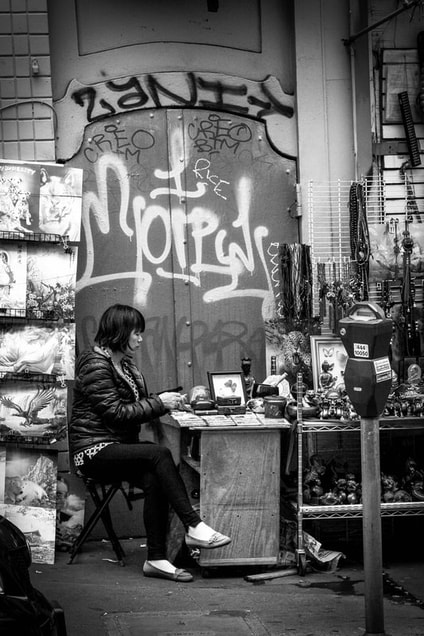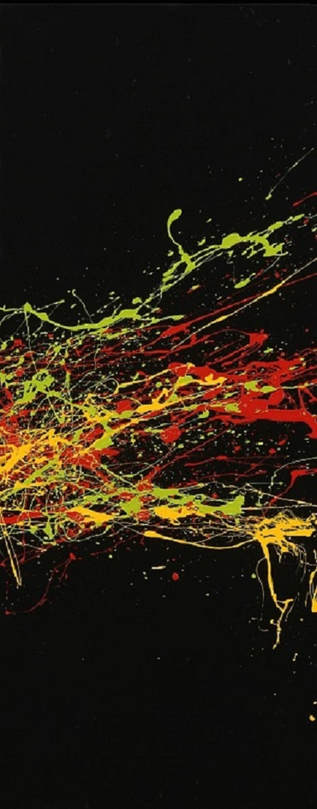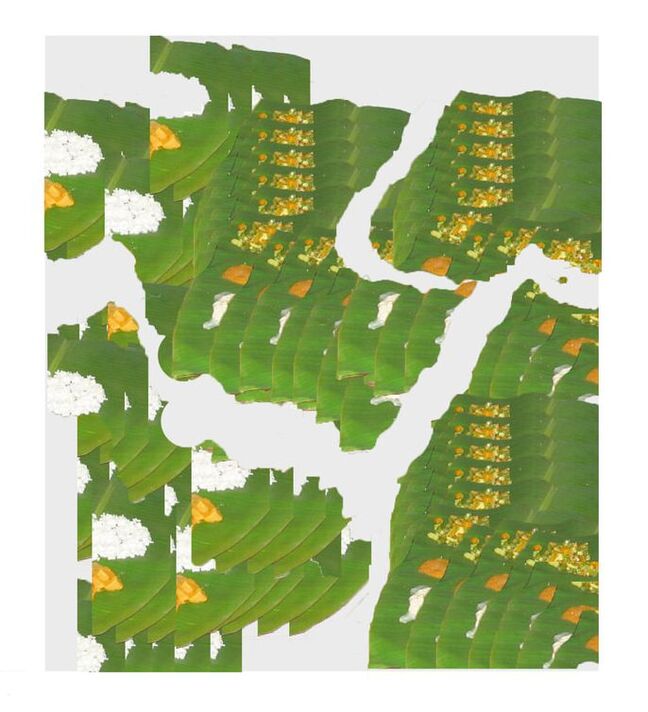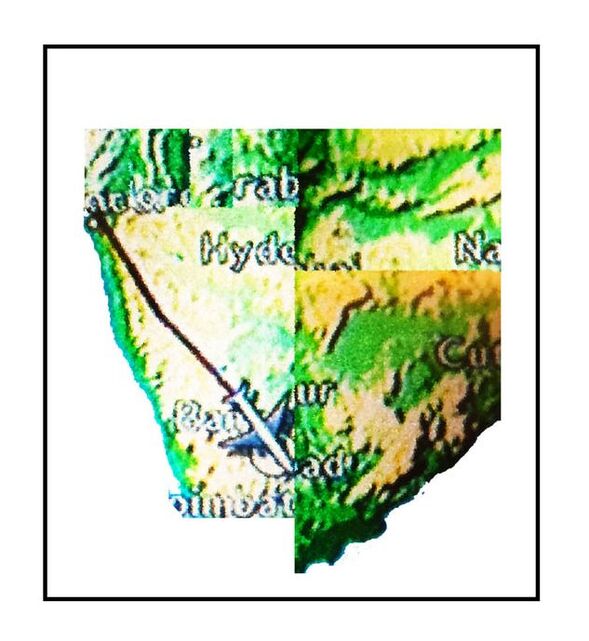Mygration
Tea Roots presents the online exhibition Mygration, which accompanies the exhibition Mygration at Joyce Gordon Gallery in downtown Oakland, California, on view from November 3 - December 2, 2017.
The artwork exhibited here explores various meanings and implications of migration – people or other living members of the planet moving from one place to another with the intention of resettling and seeking better lives, or better means of livelihood. Since time immemorial, communities have migrated with the hopes of beginning new, more dignified and more lucrative lives, making new plans, and realizing new dreams. In a sense, we inhabitants of the globe are all migrants – though the conditions and reasons have changed through time. Migrations may be due to climate change, international movements spurred by political conditions, dire conditions, local migration due to gentrification, mass increases in living cost, or labor opportunities.
For sales inquiries, please contact David T. Pang at: david@tearoots.com
The artwork exhibited here explores various meanings and implications of migration – people or other living members of the planet moving from one place to another with the intention of resettling and seeking better lives, or better means of livelihood. Since time immemorial, communities have migrated with the hopes of beginning new, more dignified and more lucrative lives, making new plans, and realizing new dreams. In a sense, we inhabitants of the globe are all migrants – though the conditions and reasons have changed through time. Migrations may be due to climate change, international movements spurred by political conditions, dire conditions, local migration due to gentrification, mass increases in living cost, or labor opportunities.
For sales inquiries, please contact David T. Pang at: david@tearoots.com
Featured Artist: Lordy Rodriguez
One way that we define the boundary of a place is to define the border, the edge, the other. The shape of a country then becomes a symbol for that place. American identity is often defined by the other sometimes to the benefit or detriment of culture. Native Americans, ironically, fall into the category of “other”. Our American identity is somewhat dependent on that irony. Native American reservations kind of act like their own countries that are somewhat autonomous of the larger country that they inhabit, yet never have I seen a shape of a reservation as a symbol for the people that live there. Rather than being defined by an arbitrary imposed border, the “sovereignty” of Native American tribes are defined by the location of their people. The Apache Nation, for example, is not in just one place but exists because the people exist. In the piece “Tribal Sovereignties”, the map of the US includes all of North America with the whole landmass divided and segmented into repeated patterns and colors. On the edges of the map, all of the existing Native American Tribes are listed out like a memorial with a corresponding pattern or color which match one or multiple locations on the map. “Tribal Sovereignties” is a map that defines the location of each tribe based on the diaspora of their people rather than the borders of their land.
--Lordy Rodriguez, Featured artist
--Lordy Rodriguez, Featured artist
Top 10 Asian Neighborhoods
(ranked by percentage of total households that are Asian in the neighborhood or suburb)
1: Mission Hills-Vineyards North - 74.6% (Fremont, San Francisco)
2: Cameron Hills South - 63.9% (Fremont, San Francisco)
3: Fremont Place - 54.2% (Los Angeles, Los Angeles)
4: Avalon-Vineyards South - 54.2% (Fremont, San Francisco)
5: Cupertino South-Regnart Canyon - 46.1% (Cupertino, San Francisco)
6: The Midwest Club - 40.1% (Oak Brook, Chicago)
7: Trinity Lakes - 37.4% (Oak Brook, Chicago)
8: Summitpointe Golf Club - 36.9% (Milpitas, San Francisco)
9: Kahala - 33.2% (Honolulu, Honolulu)
10: Lakeview - 31% (Hillsborough, San Francisco)
Top 10 Hispanic Neighborhoods
(ranked by percentage of households that are Hispanic in the neighborhood or suburb)
1: Cape Florida - 51.8% (Key Biscayne, Miami)
2: Granada Golf Course West - 47.9% (Coral Gables, Miami)
3: Southern Colonial Village - 43.4% (Coral Gables, Miami)
4: Coco Plum - 42.7% (Coral Gables, Miami)
5: Deering Bay - 39% (Coral Gables, Miami)
6: Rockdale Estates - 38.5% (Pinecrest, Miami)
7: El Paso Country Club - 33.4% (El Paso, El Paso)
8: Mitchell Manors - 31.9% (Pinecrest, Miami)
9: Star Island - 31.8% (Miami Beach, Miami)
10: Dutch South African Village - 30.6% (Coral Gables, Miami)
Figures are from the Higley 1000
http://higley1000.com
This web site investigates racial integration in America’s wealthiest neighborhoods and suburbs.
There is something inherently American or western with the terms Chico and Chang. They're like cultural equivalents to a Taco Bell or Panda Express where the cultural origination is obvious but seen as American when placed in their "homeland". To play with this duality, the text in both these pieces are of the top 10 wealthiest Asian and Hispanic neighborhoods in America. Even though these neighborhoods are mostly Asian or Hispanic, the name of these neighborhoods lack the cultural connection to its population. The opposite happens to well known immigrant neighborhoods like the Mission district in San Francisco and the multitude of Chinatowns where the cultural representations remain strong but the neighborhood populations do not. The color patterns relate back to those cultural connotations. For example, in "Chang's America", the red and yellow comes from the Chinese flag, the gray from the color of the Mao suit, and the purple which represent death in many east Asian countries. In "Chico's America", the red, green, and white come from the Mexican flag. the orange relates to migrant workers, and the beige which is a often used gang color. Names and color are strong representative elements and in these two pieces they play their roles to reflect on the dualities that all immigrant populations must deal with.
--Lordy Rodriguez, Featured artist
(ranked by percentage of total households that are Asian in the neighborhood or suburb)
1: Mission Hills-Vineyards North - 74.6% (Fremont, San Francisco)
2: Cameron Hills South - 63.9% (Fremont, San Francisco)
3: Fremont Place - 54.2% (Los Angeles, Los Angeles)
4: Avalon-Vineyards South - 54.2% (Fremont, San Francisco)
5: Cupertino South-Regnart Canyon - 46.1% (Cupertino, San Francisco)
6: The Midwest Club - 40.1% (Oak Brook, Chicago)
7: Trinity Lakes - 37.4% (Oak Brook, Chicago)
8: Summitpointe Golf Club - 36.9% (Milpitas, San Francisco)
9: Kahala - 33.2% (Honolulu, Honolulu)
10: Lakeview - 31% (Hillsborough, San Francisco)
Top 10 Hispanic Neighborhoods
(ranked by percentage of households that are Hispanic in the neighborhood or suburb)
1: Cape Florida - 51.8% (Key Biscayne, Miami)
2: Granada Golf Course West - 47.9% (Coral Gables, Miami)
3: Southern Colonial Village - 43.4% (Coral Gables, Miami)
4: Coco Plum - 42.7% (Coral Gables, Miami)
5: Deering Bay - 39% (Coral Gables, Miami)
6: Rockdale Estates - 38.5% (Pinecrest, Miami)
7: El Paso Country Club - 33.4% (El Paso, El Paso)
8: Mitchell Manors - 31.9% (Pinecrest, Miami)
9: Star Island - 31.8% (Miami Beach, Miami)
10: Dutch South African Village - 30.6% (Coral Gables, Miami)
Figures are from the Higley 1000
http://higley1000.com
This web site investigates racial integration in America’s wealthiest neighborhoods and suburbs.
There is something inherently American or western with the terms Chico and Chang. They're like cultural equivalents to a Taco Bell or Panda Express where the cultural origination is obvious but seen as American when placed in their "homeland". To play with this duality, the text in both these pieces are of the top 10 wealthiest Asian and Hispanic neighborhoods in America. Even though these neighborhoods are mostly Asian or Hispanic, the name of these neighborhoods lack the cultural connection to its population. The opposite happens to well known immigrant neighborhoods like the Mission district in San Francisco and the multitude of Chinatowns where the cultural representations remain strong but the neighborhood populations do not. The color patterns relate back to those cultural connotations. For example, in "Chang's America", the red and yellow comes from the Chinese flag, the gray from the color of the Mao suit, and the purple which represent death in many east Asian countries. In "Chico's America", the red, green, and white come from the Mexican flag. the orange relates to migrant workers, and the beige which is a often used gang color. Names and color are strong representative elements and in these two pieces they play their roles to reflect on the dualities that all immigrant populations must deal with.
--Lordy Rodriguez, Featured artist
From the Hill & Beyond series is inspired by the experience of leaving my native community Bay View Hunters Point in San Francisco California where I began my career as a visual artist. The mask symbolize protection and is reminiscent my African heritage by where I traveled in a solo journey in 1997 for 3 months to find that a huge part of my roots are directly connected to the Kamba People of Machakos in central Kenya East Africa. The juxtaposed shape represents land mass as the bold lines symbolize displacement, escape and migration.
"The Immigrant Wave" is a monochromatic painting depicting a large wave at high sea inside a circle. The background is a close-up of the wave that creates a pattern giving the illusion of an endless sea. The piece represents past and present cultures that have crossed oceans migrating to find a better way of life for political and/or ideological reasons. It also alludes to the millions of Africans that were violently sequestered from their lands, forced to cross a vast ocean and where millions perished during the treacherous journey.
Our journey has been long and the struggle has been real. More often than not, we attempt to go the distance alone. Until life and LOVE steps in and teaches us that we must continue to strengthen our bond and walk in togetherness “come hell or high water”.
The modern day Harriet leads with the challenges of yesterday's physical enslavement as her guide, and focuses on her mission of escaping the mental, emotional, and financial constraints of today.
The sustained presence of the human figures within largely abstract compositions continually draw one in though they are distanced by by the haze and distortion. There is reference of the world we experience and wonder what may exist beyond it. Things may be obscured and be like reflections in windows or in these paintings reference to reflections in water, how we remember incidents such as the boat people seeking refuge in their boats by migrating to unknown lands for a better life.
My work navigates the realms of the physical and the conceptual, the representational and the abstract. I use color themes to develop each work, with splashes of bright and unexpected color There are glimpses of faces, hands, full figures, boats amid the maelstrom of slashing abstract strokes that in many ways imbue our memories in their reflections on the landscape in the waters.
Early 1900's my father's Portuguese family migrated from the Pico Island of the Azores to the Sacramento Valley of California. The men became farmers, worked at slaughter houses, became butchers (like my father), grocers. In Moonlight Bowler the ship represents the migration, the wooden box is one such as found on a farm, the bowler is my father and the relic is from one of his trophies. Bowling during the 40's thru the 60's was the Friday night social / team event that brought his co-workers, many identified by their heritage, together. Bowler House, the bird house is for migration and also for the only house my parents owned and lived in until my father passed. For children of immigrants the house and a steady job was the sign of success. That was the way of that era. And again, the bowler....my father.
American Phoenix, is a symbolic representation of the resilient masses of ex-slaves who survived the burning of the South during the U.S. Civil War, within the embodiment of a a proud and well dressed young Black Woman. During "reconstruction" there was a mass migration of Blacks to many Northern industrial cities and to seek better lives and to escape the Jim Crow South.
The Middle Passage, is directly symbolic of the perilous forced migration of enslaved Africans to the Americas over a period of four hundred years.
Destiny Walks, is a snapshot of my imagined narrative in which a young 19th century mother takes little chance as she travels North on foot in hopes of a better life for herself and her child.
It is my honor to introdue my paternal great uncle, José Arturo Castellanos Contreras (San Vicente, El Salvador, December 23, 1893 — San Salvador, June 18, 1977). He was a Salvadoran army colonel and diplomat who, while working as El Salvador's Consul Generalfor Geneva during World War II, and in collaboration with a Jewish-Hungarianbusinessman named György Mandl, helped save up to 40,000 Jews and Central Europeans from Nazi persecution by providing them with Political Asylum (Salvadoran nationality) during the Hitler regime. Today he is considered a Latino Schindler. A monument to honor his bravery is in Hamburg Germany. There is an elementary school in the Los Angeles area to honor him. A school where children are given the message that anything is possible. I believe that it is by fate that I chose a profession to serve in the front lines of the disenfranchised communities as a Mental Health Specialist. It is my pleasure to share my great uncle's legacy to the world of Art.
People of the African Diaspora have migrated for thousands of years, physically from place to place and more powerfully from this world into spiritual form. The MAAFA, also known as the Trans Atlantic Slave Trade, was one of the largest forced migrations of human beings. Millions were taken from Africa and distributed throughout the globe. Many were lost during this viscous transition. For years these spiritual ancestors were unknown. In this day many African Descendants are now honoring these lost ones through spiritual and communal rituals. Today many also mourn the lost of young African American men and women due overwhelming police violence and vicious racism, a new spiritual migration.
In migrations, only people are constrained by borders. While we stand immobilized, butterflies and flowers are continually in motion, sublimely appearing from one side of the map to the other.
In this piece, Unconstrained Migration, I've chosen to represent migrating Monarch butterflies, superimposed as paper cuts and flying high above a watercolor painting of Dahlia flowers, represented as the continents below. The global icon for boarder crossing, Monarch butterflies cover thousands of miles in their lifetimes, following flowers and the climate to new lands at will. The Dahlias painted here have been migrating for over 300 years, leaving their Mexican homeland on European ships, and embarking on a journey of growth and change. As Dahlias evolved from a local mountain species into the global sensation they are today, they have completely circumnavigated the world, quietly touching and changing people and culture everywhere.
As primarily a flower painter, I chose to combine the paper cut images of the globe and traveling Monarchs with this Dahlia painting to give form to the stories that I believe exist in every flower. Stories, especially stories of migration, surround us in the natural and symbolic world.
Flowers and their accompanying pollinators are one of the oldest forms of story telling, with seeds, plants, and butterflies inextricably linked to every camel train, boat voyage, foot crossing, caravan, and re-drawn world map throughout history. Like great continents themselves, flowers link us to ancestors while they continue to drift, evolve, and summon new pollinators to them.
Like great continents themselves, flowers link us to ancestors while they continue to drift, evolve, and summon new pollinators to them.
In this piece, Unconstrained Migration, I've chosen to represent migrating Monarch butterflies, superimposed as paper cuts and flying high above a watercolor painting of Dahlia flowers, represented as the continents below. The global icon for boarder crossing, Monarch butterflies cover thousands of miles in their lifetimes, following flowers and the climate to new lands at will. The Dahlias painted here have been migrating for over 300 years, leaving their Mexican homeland on European ships, and embarking on a journey of growth and change. As Dahlias evolved from a local mountain species into the global sensation they are today, they have completely circumnavigated the world, quietly touching and changing people and culture everywhere.
As primarily a flower painter, I chose to combine the paper cut images of the globe and traveling Monarchs with this Dahlia painting to give form to the stories that I believe exist in every flower. Stories, especially stories of migration, surround us in the natural and symbolic world.
Flowers and their accompanying pollinators are one of the oldest forms of story telling, with seeds, plants, and butterflies inextricably linked to every camel train, boat voyage, foot crossing, caravan, and re-drawn world map throughout history. Like great continents themselves, flowers link us to ancestors while they continue to drift, evolve, and summon new pollinators to them.
Like great continents themselves, flowers link us to ancestors while they continue to drift, evolve, and summon new pollinators to them.
Women in picture's story "I was born in Oakland. first generation American. I think it was a typical first generation experience, in that you're a little different. I would say that my mothers refugee trauma is in my blood to some extent. I've never been "back home."
"My elders migrated from the south to the west to get their dream seeds planted,watered &rooted for the will of god to create life over strife for our melanin alone. I blossomed 3 generations deep in the mud. these generations migrated north and east planting seeds with the calloused soles of their feet. Our family tree roots connected the journeys of our legacy across the world."
From a series done on a group highlighting forced emigration by gentrification and highlighting police brutality. They are faceless entities almost ghost-like in representing an often economically powerless people facing an existence that is rapidly changing; A people being led down an unforeseen path into the unknown.
Ship of State is on one level a representation of the Middle Passage, but also alludes to other forms of forced migration. The captain of the ship, as always, is the one with the biggest gun.
Some immigrants unable to sustain rent affordability wind up homeless. And some sleep in the park at night.
There is string and tacks for community on the table. Appreciative Inquiry helps each person create a unique migratory pattern. This pattern is what the artist calls a "visual geography." Also on the table are blank world maps (8.5X11) provided for patrons with drawing and writing tools). Patrons will map their geographies and then write a story about the journey. Where is home?
Much of my work is concerned with the movement of Black bodies and souls throughout the world and throughout the spiritual plane. Using color, emotion and ancestral memory, I explore the theme of migration in this piece.
My work is inspired by the concept of home. To migrate is to leave one home behind for another. The question of defining what can and should be home is left to the immigrant. The two submitted poems are the reflections of a young, south Asian who grows up steeped in a diasporic love for her ancestral land in southwest India. The narrator is angry and bitter at white America for its voyeuristic and colonial attitude towards her home. The poems are emotional and anti-assimilationist to oppose the stereotype of the "model minority". These poems are also for the south Asian heart and mind which too easily leave mother India behind and too quickly forgets the beauty of ancestry and home. The digital collages are recreations of maps using south Asian imagery. They are maps that cannot be read and therefore will not allow the traveler to reach their destination similar to how Mygration, for many south Asians, is often far more complex than the physical navigation of oneself from point A to point B.
Forward by David Pang – Executive Director of Tea Roots
Nearly 60 million people have been driven from their homes by war and persecution, an unprecedented global exodus that has burdened fragile countries with waves of newcomers and littered deserts and seas with the bodies of those who died trying to reach safety*
Borders limit healthy migration. Mistrust is sown with walls. Violence separates people. We witness Syrian refugees praying for safety and Latin Americans escaping violence in their homes. Great numbers of refugees are seen climbing fences, crawling through tunnels, and swimming the seas to reach safety and opportunity.
Our current administration is attempting to create a similar divide in communities of the United States. Social services are cut at the behest of the International Monetary Fund to encourage foreign investment. Neoliberal reforms increase inequality by disrupting the local economies. This leads to urban-suburban migration or migration to other states. Our nation observed the post-WWII “white-flight” to suburbia, leaving urban environments to decay. The recent Great Recession hurt minority home-owners who lost their homes to become renters. Many people are now far away from their cultural institutions, communities, and the services that once supported them.
The SF Bay Area was once the biggest ship-building industry in the history of the world. Warships were built at Pier 70 in that era. From the art studio window of artist Michael Rios, I see hundreds of cars off-loaded from ships, parked in a matrix grid on the dock for sale to the dealerships. He states, "I was revolutionary in a way. My battle on the streets was against the over-saturation of commercial billboards in the community.”
Lordy Rodriguez documents cultures such as the Chinese, Mexican, and even tribal sovereignties of Native American Indians on maps. Last week, from his art studio window in Benicia, I saw the same hundreds of cars parked in a matrix-like grid on the dock. Instead of warships leaving the Bay Area docks during the last world war, the globalized economy is presenting us automobiles.
As artists we see the unseen and infinite details that make up the fabric of society. We must continue our visionary practice to educate and to provide solutions for each person's story. Herein lies the origin of the theme for "Mygration".
Nearly 60 million people have been driven from their homes by war and persecution, an unprecedented global exodus that has burdened fragile countries with waves of newcomers and littered deserts and seas with the bodies of those who died trying to reach safety*
Borders limit healthy migration. Mistrust is sown with walls. Violence separates people. We witness Syrian refugees praying for safety and Latin Americans escaping violence in their homes. Great numbers of refugees are seen climbing fences, crawling through tunnels, and swimming the seas to reach safety and opportunity.
Our current administration is attempting to create a similar divide in communities of the United States. Social services are cut at the behest of the International Monetary Fund to encourage foreign investment. Neoliberal reforms increase inequality by disrupting the local economies. This leads to urban-suburban migration or migration to other states. Our nation observed the post-WWII “white-flight” to suburbia, leaving urban environments to decay. The recent Great Recession hurt minority home-owners who lost their homes to become renters. Many people are now far away from their cultural institutions, communities, and the services that once supported them.
The SF Bay Area was once the biggest ship-building industry in the history of the world. Warships were built at Pier 70 in that era. From the art studio window of artist Michael Rios, I see hundreds of cars off-loaded from ships, parked in a matrix grid on the dock for sale to the dealerships. He states, "I was revolutionary in a way. My battle on the streets was against the over-saturation of commercial billboards in the community.”
Lordy Rodriguez documents cultures such as the Chinese, Mexican, and even tribal sovereignties of Native American Indians on maps. Last week, from his art studio window in Benicia, I saw the same hundreds of cars parked in a matrix-like grid on the dock. Instead of warships leaving the Bay Area docks during the last world war, the globalized economy is presenting us automobiles.
As artists we see the unseen and infinite details that make up the fabric of society. We must continue our visionary practice to educate and to provide solutions for each person's story. Herein lies the origin of the theme for "Mygration".
Curatorial Statement by Eric Murphy - Curator of Joyce Gordon Gallery
“Mygration,” explores the various implications and sometimes personal perspectives of migrating people or other living members of the planet. These migrating experiences can be due to climate change, international movements spurred by political or dire conditions, local migration due to gentrification, mass increases in living cost, or labor opportunities. Their stories record visual experiences and perspectives that make us laugh, bring us to tears: and yet allow us to pause at the thought of how migration affects us all.
Selected artworks focus on both current and historical aspects of migration. Historic references include David Graves’ painting “American Phoenix,” which addresses the post- U.S. Civil War mass migration of African Americans to many Northern industrial cities escaping the Jim Crow South. Lorraine Bonner’s sculpture “Ship of State,” reflects on the Middle Passage - the forced voyage of enslaved Africans across the Atlantic Ocean to the Americas along with other forms of forced migration. Kevin Woodson’s “Unconstrained Migration,” light box and water color painting highlights the unconstrained borders of the Mexican Dahlias’ over 300 years of world travel and Monarch Butterflies as a global icon for border crossing over thousands of miles in their lifetimes. More current themes of migration are seen Monjett Graham’s painting “Sleeping in the Park” which points to growing homelessness across the urban US caused by gentrification and mass rent increases. “Harvey, Irma, Jose & Maria” painting by Susan Matthews directly addresses recent natural disaster causing the displacement of 2017 hurricane victims.
“United States IV (Tribal Sovereignties)” by featured artist Lordy Rodriguez, is an ink on paper drawing and one of a group of Rodriguez’s works in this exhibit. This work is part of an ongoing series of US maps that takes a generalized shape of the US and places the top 200 + countries of origin of US immigrants, including his own native Philippines. In “Tribal Sovereignties,” Rodriguez identifies indigenous groups that are more defined by their tribal communities than geographical location. Certain tribes occupy various territories across the U.S.
“Mygration,” explores the various implications and sometimes personal perspectives of migrating people or other living members of the planet. These migrating experiences can be due to climate change, international movements spurred by political or dire conditions, local migration due to gentrification, mass increases in living cost, or labor opportunities. Their stories record visual experiences and perspectives that make us laugh, bring us to tears: and yet allow us to pause at the thought of how migration affects us all.
Selected artworks focus on both current and historical aspects of migration. Historic references include David Graves’ painting “American Phoenix,” which addresses the post- U.S. Civil War mass migration of African Americans to many Northern industrial cities escaping the Jim Crow South. Lorraine Bonner’s sculpture “Ship of State,” reflects on the Middle Passage - the forced voyage of enslaved Africans across the Atlantic Ocean to the Americas along with other forms of forced migration. Kevin Woodson’s “Unconstrained Migration,” light box and water color painting highlights the unconstrained borders of the Mexican Dahlias’ over 300 years of world travel and Monarch Butterflies as a global icon for border crossing over thousands of miles in their lifetimes. More current themes of migration are seen Monjett Graham’s painting “Sleeping in the Park” which points to growing homelessness across the urban US caused by gentrification and mass rent increases. “Harvey, Irma, Jose & Maria” painting by Susan Matthews directly addresses recent natural disaster causing the displacement of 2017 hurricane victims.
“United States IV (Tribal Sovereignties)” by featured artist Lordy Rodriguez, is an ink on paper drawing and one of a group of Rodriguez’s works in this exhibit. This work is part of an ongoing series of US maps that takes a generalized shape of the US and places the top 200 + countries of origin of US immigrants, including his own native Philippines. In “Tribal Sovereignties,” Rodriguez identifies indigenous groups that are more defined by their tribal communities than geographical location. Certain tribes occupy various territories across the U.S.
Tea Roots is a 501(c)3 public benefit corporation formed to empower social change through the arts. Founded in 1995 as a not-for-profit publishing program, Tea Roots has become a cultural arts production organization dedicated to establishing equitable access to artistic venues. Tea Roots advances the emergence of artistic works of under-represented writers, visual artists, intellectuals and activists from diverse disciplines, cultures, communities, and fields of study. Tea Roots' programs transcend traditional models of philanthropy by integrating education, leadership, social entrepreneurship, and arts production.
Joyce Gordon Gallery is a commercial fine art gallery located in the downtown district of Oakland California. The gallery exhibits art that reflects the social and cultural diversity of the Bay Area and international artists. The aim of the gallery is to respect the creative pursuits of the individual and seeks to make such work accessible to a broad audience.
Joyce Gordon Gallery is a commercial fine art gallery located in the downtown district of Oakland California. The gallery exhibits art that reflects the social and cultural diversity of the Bay Area and international artists. The aim of the gallery is to respect the creative pursuits of the individual and seeks to make such work accessible to a broad audience.
